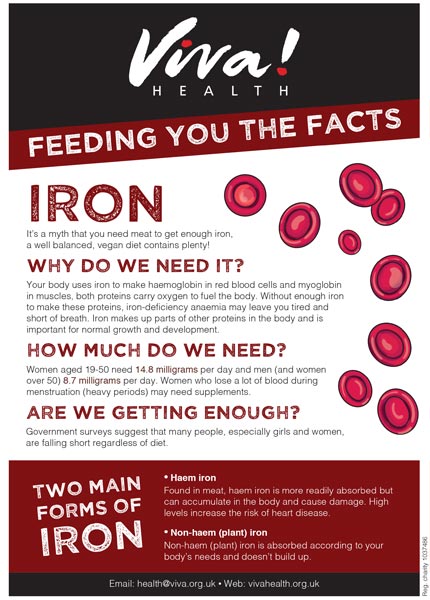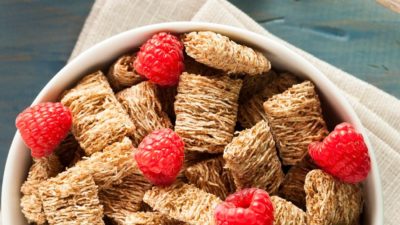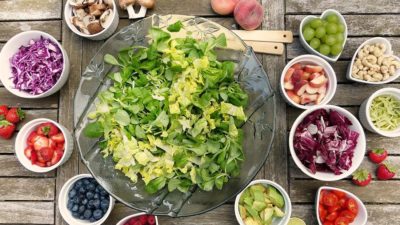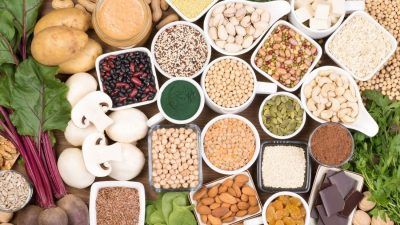Mini factsheet: Iron

It’s a myth that you need meat to get enough iron, a well balanced, vegan diet contains plenty!
Why do we need it?
Your body uses iron to make haemoglobin in red blood cells and myoglobin in muscles, both proteins carry oxygen to fuel the body. Without enough iron to make these proteins, iron-deficiency anaemia may leave you tired and short of breath. Iron makes up parts of other proteins in the body and is important for normal growth and development.
How much do we need?
Women aged 19-50 need 14.8 milligrams per day and men (and women over 50) 8.7 milligrams per day. Women who lose a lot of blood during menstruation (heavy periods) may need supplements.
Are we getting enough?
Government surveys suggest that many people, especially girls and women, are falling short regardless of diet.
There are two main forms of iron:
- Haem iron found in meat, haem iron is more readily absorbed but can accumulate in the body and cause damage. High levels increase the risk of heart disease.
- Non-haem (plant) iron is absorbed according to your body’s needs and doesn’t build up.
Getting the balance right
- TOO MUCH – Taking too much in supplements (over 20 milligrams) may cause constipation, nausea, vomiting and stomach pain. Very high doses can be toxic, especially for children, if you have supplements at home, keep them in a safe place.
- TOO LITTLE – Deficiency symptoms include: tiredness, weakness, feeling cold, inability to concentrate, weakened immune system and anaemia.
Foods to include
Wholegrains (quinoa, wholewheat spaghetti and wholemeal bread), fortified breakfast cereals, pulses (lentils, tofu, baked beans, kidney beans, peas), seeds (pumpkin seeds, sesame seeds and tahini – sesame seed paste), dried fruit (apricots and figs), seaweed (nori) and dark green leafy vegetables (kale).
Do you need a supplement?
No, a varied, vegan diet rich in wholegrain foods, pulses, nuts, seeds and green leafy vegetables will cover your needs. The EPIC Oxford study, one of the largest studies of vegetarians and vegans, found that vegans had the highest intake of iron, followed by vegetarians, then fish-eaters with meat-eaters coming last. The American Dietetic Association say that iron-deficiency anaemia is no more common among vegetarians than meat-eaters.
Fun fact
The myth that spinach contains exceptional levels can be traced back to a mathematical error when a German chemist misplaced the decimal point making the iron content of spinach seem ten times higher than it really is! Popeye helped spread the myth even further. Spinach is a good source, but not off the scale. Steamed baby spinach contains more iron per gram than a sirloin steak from a steakhouse!
Top tips
A substance called phytate found in pulses, grains and seeds can bind to iron and reduce absorption. Soaking pulses and discarding the water can help as can sprouting grains and seeds. Vitamin C helps you absorb iron. The vitamin C in eight strawberries or a 200ml glass of orange juice can increase iron absorption three- to four-fold. To boost your iron levels combine vitamin C-containing foods with iron-rich meals – beans on toast with apple juice or watercress salad with dates, pumpkin seeds and slices of orange.
This post has been categorised in: All Print Materials, Mini factsheets







